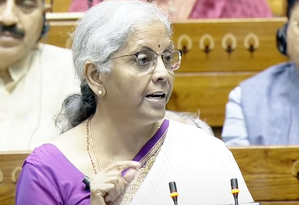Chinese cultural re-engineering continues against Uyghurs
New Delhi, July 17: A June 2024 report by Human Rights Watch (HRW) reveals that China systematically changed the names of around 630 villages that held historical and religio-cultural significance for the Uyghurs of the northwestern region of Xinjiang.
Although renaming villages is a process that is in force since 2009 and has affected some 3,600 villages until now, a close examination exposed that a fifth of these changes, which mostly took place between 2017 and 2019, signalled a deliberate attempt at cultural erasure.
This revelation is far from anomalous considering Chinese activities in the bordering territory, officially called Xinjiang Uygur Autonomous Region, which is also the largest province in China. In the past few years, several reports by international human rights organisations, journalists and research groups have increasingly pointed to the egregious cultural re-engineering and atrocious human rights excesses that the predominantly Muslim Uyghurs have been subjected to by the Chinese state.
The Uyghurs are an ethnic minority group, constituting half the population (around 12 million) of the Xinjiang province. Historically located along the ancient silk route, the region was a hub of cross-migration, reflected in the diversity of the ethnic groups that inhabit it. Apart from the Uyghurs, it also houses the Kazakhs, Kyrgyz, Tajiks, Mongols, Uzbeks, Tatars, as well as the Han Chinese. Since 2018 when the UN alleged that China had detained at least one million Uyghurs in what it calls ‘counter-extremism’ centres, the province has come to international limelight. However, the Chinese state’s tussle with Xinjiang can be traced far back, at least, until the first half of 20th century. In 1933 and 1944, an independent East Turkestan was declared in the region, but the movement came under the Chinese jackboot when the region was annexed in 1949. The PRC claims that Xinjiang has been an integral part of China since 206 BC.
More recently, in the 1990s, there were violent attacks that were linked to the East Turkestan Islamic Movement (ETIM) that demanded an independent state of East Turkestan in place of Xinjiang. Thereafter, the post 9/11 Global War on Terror enabled China to justify its actions against the Uyghur community as its battle against ‘the three evils’ of separatism, religious extremism, and international terrorism. An end to religio-cultural repression and ethnic discrimination have been long-held demands of Uyghurs, but the Chinese state has always met their protests with brutal crackdown, most exemplified in the Ghulja massacre of 1997.
The year 2009 also witnessed riots in the region’s capital Urumqi as Uyghur demonstrators outraged against state-driven Han Chinese migration, ensuing in a bloody state response. This marked a turning point and the CCP then directed all the state’s might to collectively punish the Uyghur people in the name of counter-extremism. The most glaring of the PRC’s repressive acts against the Uyghurs has been the programme of mass arbitrary detention and indoctrination, officially referred to as Vocational Education and Training Centres (VETC). Initiated in 2014 and expanded in 2017, these heavily guarded ‘re-education’ camps have been grounds for systematic torture, forced labour and sexual abuse, according to multiple reports. In 2019, the Chinese government claimed that they had closed most of these VETCs, but reports from international research institutes such as the Australian Strategic Policy Institute (ASPI) raise concerns that the PRC may be increasingly utilising the formal prison system for Uyghur repression. A 2022 HRW report revealed that half a million people had been prosecuted in Xinjiang since 2017. Moreover, along with the state-incentivised Han Chinese migration into Xinjiang, the Uyghurs are subjected to forced sterilisations, abortions, and IUDs, in what many have termed ‘demographic genocide’. Between 2015 and 2018, birth rates in the Uyghur regions of Hotan and Kashgar plummeted by over 60 per cent, compared to the nationwide statistic of 4.2 per cent. Combined with this is the programme of mass surveillance involving frequent checkpoints, collection of biometrics, and face-recognition cameras.
This Panoptican policing regime prominently emerged under Chen Quanguo, Xinjiang’s Communist Party Secretary, infamous for already implementing his methods of social control in Tibet. This high-tech surveillance system is then put to the service of mass-imprisonment of Uyghurs, who are routinely picked up for donning a veil, growing a beard, texting Quranic verses, visiting mosques- essentially practising their religion. Additionally, there are intense restrictions on travel and even contacting people from countries China considers ‘sensitive’. The Chinese surveillance-state even sends out party officials to stay in Uyghur homes from time to time to check in on their behaviours. Not to mention, the Chinese state has also enacted the alteration or destruction of several mosques across the region in recent years.
While some countries label Chinese activities in Xinjiang as ‘genocide’, a 2022 UN report claimed that they could have amounted to ‘crimes against humanity’. Few countries such as the US, Canada and so on, as well as the EU have consistently raised this issue and even gone on to sanction Chinese officials and entities linked to human rights abuses in Xinjiang. However, China has been able to utilise its economic and strategic heft to make many countries kowtow to its official line. The most notorious among these are the Muslim-majority countries such as Saudi Arabia, Pakistan, UAE, Iran, CARs, Turkey, and so on, which have not just kept silent but went above and beyond to advocate ‘non-intervention in Chinese affairs’ by the international community.



